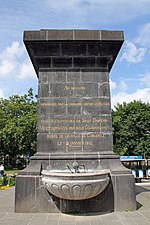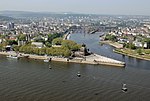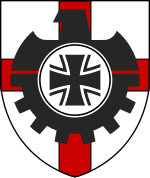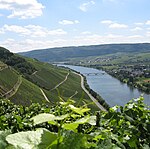Basilica of St. Castor

The Basilica of St. Castor (German: Basilika St. Kastor or Kastorkirche) is the oldest church in Koblenz in the German state of Rhineland Palatinate. It is located near Deutsches Eck at the confluence of the Rhine and the Moselle. A fountain called Kastorbrunnen ("Castor well") was built in front of the basilica during Napoleon’s invasion of Russia in 1812. Pope John Paul II raised St. Castor to a basilica minor on 30 July 1991. This church is worth seeing for the historical events that have occurred in it, its extensive Romanesque construction and its largely traditional furnishings. Since 2002, the Basilica of St. Castor has been part of the UNESCO World Heritage cultural landscape of the Upper Middle Rhine Valley. In addition, it is a cultural property protected under the Hague Convention.
Excerpt from the Wikipedia article Basilica of St. Castor (License: CC BY-SA 3.0, Authors, Images).Basilica of St. Castor
Kastorhof, Koblenz Altstadt
Geographical coordinates (GPS) Address Website External links Nearby Places Show on map
Geographical coordinates (GPS)
| Latitude | Longitude |
|---|---|
| N 50.362222222222 ° | E 7.6044444444444 ° |
Address
Basilika Sankt Kastor
Kastorhof
56068 Koblenz, Altstadt
Rhineland-Palatinate, Germany
Open on Google Maps











